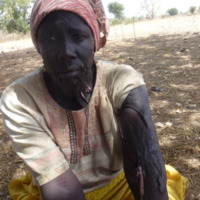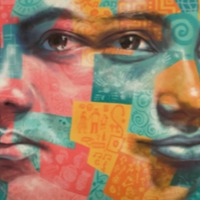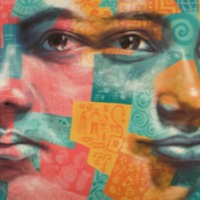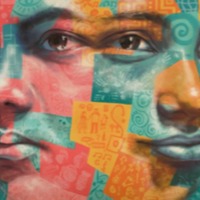
Alom Kuol Koor
There are an estimated 465,000 people living in modern slavery in Sudan (GSI 2018). Between 1983 and 2005, the central government of Sudan enslaved tens of thousands of black South Sudanese Christian and traditionalist people. It was part of a genocidal war against South Sudan, with a simple aim: to force South Sudan to become Arab and Muslim. Alom Kuol Koor was captured in 1998 and forced to walk to north Sudan. Upon arrival he was given to her ‘master’ and forced into domestic servitude. He was finally liberated in 2016 when he escaped and met with a slave retriever in a neighbouring village.

DH
There are an estimated 4,000 people living in modern slavery in Qatar (GSI 2018). Qatar is a destination country for men and women subjected to forced labour and, to a much lesser extent, forced prostitution. Men and women from Nepal, India, Pakistan, Bangladesh, the Philippines, Indonesia, Sri Lanka, Sudan, Kenya, Nigeria, Uganda, and other countries voluntarily migrate to Qatar as unskilled laborers and domestic workers, often paying illegal and exorbitant fees to unscrupulous recruiters in the labour-sending countries, thereby increasing their vulnerability to debt bondage. Some workers subsequently face conditions indicative of involuntary servitude, to include restricted movement, payment withholding, passport confiscation, exit permit retention, and threats of deportation or abuse. Individuals in Qatar sell visas to migrants and occasionally demand regular payments, enabling migrant workers to work illegally and without legal recourse against their respective sponsors, although reportedly this trend is on the decline. DH, was arrested after the police realised she was having a relationship with her employer.

The Truth Behind Closed Doors
'The Truth Behind Closed Doors' provides a lesson plan and resources for teaching about domestic servtiude - the exploitation and mistreatment of domestic workers, usually in private homes. Exploitation of domestic workers can happen to migrants domestic workers who have left their fmailies to earn money abroad, but also to workers in private homes in their own country of origin.The lesson plan provides two 55-minute lessons, depending on the level of your students. It is aimed at Older teens, young adults and adults, B2+ (upper intermediate to advances)Materials include: Rose’s personal narrative, student worksheet, autonomous learning resources, information about human trafficking and modern slavery, transcripts of audio recordings, slides, Teacher’s Guide Audio for this lesson plan can be found at https://youtu.be/i28Bev-_sFs

Helia (Narrative 2)
The 2016 Global Slavery Index ranks Haiti eighth in the world for prevalence of modern slavery by population. Today, about 407,000 children in Haiti are engaged in domestic child labor, according to a study conducted by UNICEF in partnership with more than 30 organisations. The investigation also found that 207,000 children under the age of 15 work in unacceptable forms of domestic child labour. Haitian children born in to poor families suffer from the restavèk system in which they are sent to work in domestic servitude because their families do not have the resources to care for them. Helia was five years old when, after the death of her mother and grandmother, she was sent to live and work at someone's house as a restavèk. Forced to work long hours with no breaks, denied food and subjected to physical violence, Helia attempted to escape to different homes multiple times, but found each home as bad as the last. Helia was finally freed after people in the community pressured her owner to free her. Though Helia married, had children and thought her life had finally gotten better, in 2004 men broke in to her house, raped her and her daughter and took her husband away. Due to poverty Helia had to send one of her own daughters to work as a restavèk and lived in constant fear of the men who killed her husband. Helia now works with KOFAVIV (Commision of Women Victims for Victims), working to challenge the restavèk and end slavery in Haiti.

Elvira
The UK National Crime Agency estimates 3,309 potential victims of human trafficking came into contact with the State or an NGO in 2014. The latest government statistics derived from the UK National Referral Mechanism in 2014 reveal 2,340 potential victims of trafficking from 96 countries of origin, of whom 61 percent were female and 29 percent were children. Of those identified through the NRM, the majority were adults classified as victims of sexual exploitation followed by adults exploited in the domestic service sector and other types of labour exploitation. The largest proportion of victims was from Albania, followed by Nigeria, Vietnam, Romania and Slovakia. Elvira sought employment through an agency when her husband fell sick. She was given a job as a domestic worker in Qatar, however was forced to work 7 days a week for less than the agreed pay. After a year, the family flew Elvira to London to work for one of their sisters. There she was subjected to gruelling hours with no pay, poor nutrition and subjected to daily verbal abuse. Elvira was able to get help when a friend referred her a federation for Filipino workers and she escaped to a nearby church.